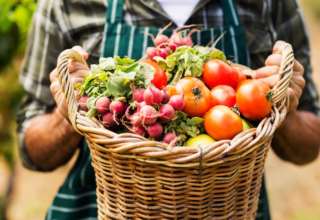Convenient, cheap and nutritious, canned food is enjoying a popularity boom, here is (almost) everything you need to know about the pantry staples
In 2020, when the coronavirus pandemic hit, canned food flew off the shelves almost as quickly as toilet roll. While some consumers were looking to hunker down at home with a fully stocked pantry, others were seeking comfort in good, old-fashioned childhood favourites made from tins that they are so familiar with. So, we think it’s time to take a look at how the invention of canning has revolutionised the way we eat, and how we deal with our resurgent love affair with canned food in recent times.
A brief history of canned food
Until the 18th century, food was preserved by less efficient methods such as salting, drying, smoking and pickling. In 1795, wanting to better feed his army during wars, Napoleon Bonaparte, then a general in charge of the France Army stationed on the Italian border, offered a prize of 12,000 francs to anybody who could make a breakthrough in the preservation of food.

Fourteen years later, in 1809, Nicolas Appert, a candy shop owner in Paris, claimed the prize from Napoleon, who by now was the Emperor of the French. Appert had successfully invented the method of preserving food after years of experiments. The winning method was to put the food in airtight jars and then boiling them.
Appert detailed the process he took to preserve various types of food in his book The Art of Preserving All Kinds of Animal and Vegetable Substances for Several Years, published in London in 1811, which is available from the Library of Congress. In 1812, Appert established the first commercial cannery, the House of Appert, in the commune of Massy, near Paris.
Although Appert is credited with inventing canned food, he didn’t understand why heat treatment would help with preservation. The science behind Appert’s discovery was finally revealed about 54 years later by Louris Pasteur, who proved that the heat-treatment process, now known as pasteurisation, could kill microbes in certain foods and beverages.
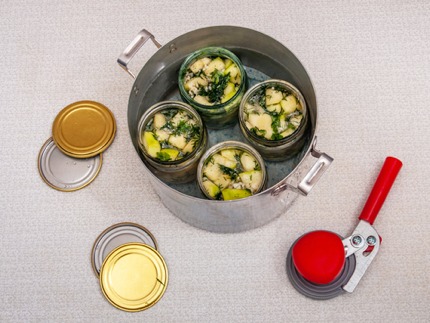
Intriguingly, Appert also didn’t use a tin can. This is where we must introduce a man named Peter Durand. While Appert was busy preserving foods in glass jars, Peter Durand, an English merchant, patented the use of tin-plated cans in 1810. The patent document divulged that Durand had help from a foreigner about this idea. Other documents showed it was a Frenchman named Philippe de Girard who used Durand as an agent to patent the tin idea.
While we don’t exactly know why Girard chose to use Durant to file the patent in England, we do know that tin is indeed more versatile than glass – it’s lighter, doesn’t break easily, and soldered lids are much easier to handle. In 1812, Durand sold the patent to Bryan Donkin and John Hall. They partnered with John Gamble and the trio went on to set-up a commercial cannery in Bermondsey, south of London, producing canned food for the British Army stationed overseas. The upshot of it all was, by 1813, both the French and the English could now send better provisions to their troops, thereby revolutionising combat rations and enhancing their military prowess.
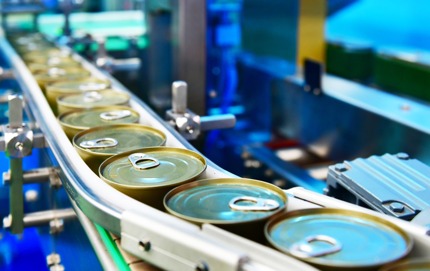
The rise of mass production
According to the International Food Additives Council, canned food arrived in America in 1825, but it only became hugely popular in 1856 when Gail Bordon developed a process for concentrating milk. The result was condensed milk, which could prolong the shelf-life of milk without the need for refrigeration (home refrigerators were invented much later in 1913). In 1861, the American Civil War broke out, and the demand for canned food and tinned milk skyrocketed.
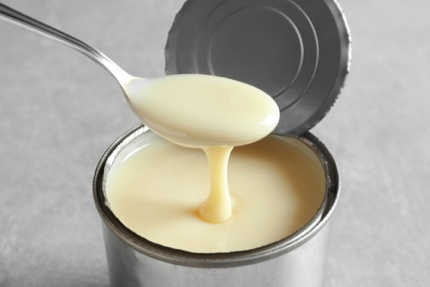
On the other side of the pond, the Victorian era (1837 to 1901) saw massive rural-to-urban migration, as cities and newly industrialised zones needed workers. These workers and their families required cheap and convenient food, and canned food could fill the gap comfortably. The rapid expansion of railways also made food transport and distribution easier – fresh produce could now be sent to factories in a shorter time, turned into canned products with long shelf lives, and delivered to consumers far and wide. In other words, the canning process helped feed many, also reduced spoilage and cut waste, making it a win-win situation for many.
Within a few decades, the growing demands saw a string of food processing companies being launched; among them were Nestlé (founded in 1866), Heinz (founded in 1869), Campbell (founded in 1869), Princes (founded in 1880) and Del Monte (founded in 1886). Along the way, these companies also helped with the development of support and ancillary sectors such as manufacturing machines, process engineering, testing and packaging.
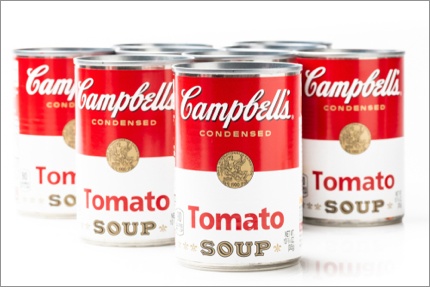
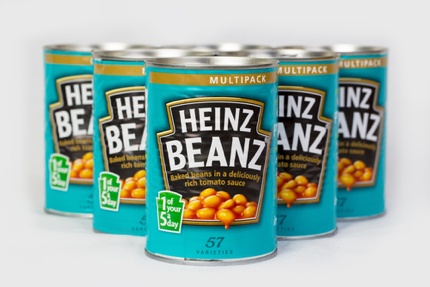
Intriguing canned food around the world
According to a report from USA Today, canned soup enjoys the greatest market share in the USA, with 11 most popular varieties sold more than 420 million cans a year. Canned tuna, with almost 286 million units sold, takes the second place. Among canned vegetables, corn is most popular – it is said that 63% of Americans have canned corn at home.
In the UK, baked beans used to be the most popular canned food, but with people opting for healthier options, canned fish now takes the lead. Interestingly, in a few island nations like Guam and the Philippines, Spam is the ultimate canned hero. If you’d like to know about Spam and its popularity, check out this article Spam: The miracle meat in a can.

Apart from the usual staples that we are familiar with, there is also a wide range of lesser-known (but highly intriguing) canned foods available in some parts of the world, so it is time to share some of them here.
Surströmming
We were warned about opening a can of surströmming, fermented and salted Baltic herring, a delicacy in Sweden, but no amount of preparation could suppress the pungent smell and the acid taste of fish that we encountered. The herring is usually caught in the spring and left to ferment for a month, before being canned, sold and enjoyed by the public. Once you open the tin, you need to wash and gut the fish, before wrapping it in buttered tunnbröd, a type of Swedish flatbread, and enjoying it with diced onion and slices of small potatoes. If you are keen to try surströmming, follow this link to the Amazon to purchase a can.
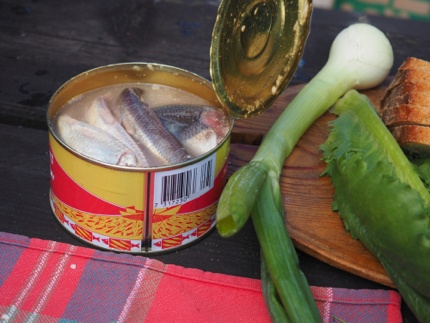
Silkworm pupa
In Korea, beondegi (silkworm pupa) is popular street food, so it is no surprise that you can also find a canned variety. The taste is quite nutty and crispy (if you bake it long enough), but it also has a slight fishy taste.
Pork brains
Available in all southern US states, ‘pork brains with milk gravy’ is marketed under the name Rose by Boone Brands, a food processing company in Sanford, North Carolina. According to their website, the pork brains are often cooked with scrambled eggs. We didn’t have the guts to try this one.
Alligator
Native to the south-eastern US states, alligators live primarily in lakes, swamps and marshes. They are also being farmed commercially for their hides and meat. The taste of alligator is similar to chicken, but with a slightly fishy taste, and the texture is also firmer.
Is canned food bad for you?
Canned food has received a fair amount of negative attention, especially when it comes to bisphenol A or BPA in short. BPA is a chemical that’s often found in plastic bottles and can linings. Studies have shown that tiny amounts of BPA can seep from can linings into food. Some scientists consider this seepage bad, as BPA could interfere with our health, especially our hormone systems.
Authorities worldwide (including the US Food and Drug Administration and the European Food Safety Authority) have said that the levels of BPA people would typically consume do not pose a risk. But in an attempt to reassure consumers, many food manufacturers have already moved to replace BPA with other chemicals, such as using can linings made from acrylic or polyester. While you can now purchase BPA-free canned food on supermarket shelves, we must point out that no one knows if the alternatives are indeed safer than BPA.
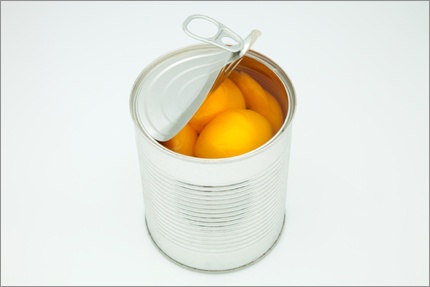
While BPA divides opinions, scientists and dietitians generally agree that some canned food is nourishing. We found a BBC article quoted a nutrition scientist at the British Nutrition Foundation that “Tinned oily fish like salmon, for example, is healthy. And beans and pulses, like chickpeas and lentils, are a good source of protein and fibre while being low in fat.”
The trick, it seems, is to know what canned food to buy by reading the label. If the label says it contains high amounts of fat (including saturated fat), salt and sugar, then it is probably not going to be good for your health. But what’s considered high? According to the National Health Service (NHS) in Great Britain, one should look at the amount of each nutrient in 100g (3.5 ounces) – equivalent to a portion of food – and work out how much it contributes to your daily intakes.
The NHS guidelines are as follows:
- High in fat: more than 17.5g of fat per 100g
- Low in fat: 3g of fat or less per 100g
- High in saturated fat: more than 5g of saturates per 100g
- Low in saturated fat: 1.5g of saturates or less per 100g
- High in sugars: more than 22.5g of total sugars per 100g
- Low in sugars: 5g of total sugars or less per 100g
- High in salt: more than 1.5g of salt per 100g
- Low in salt: 0.3g of salt or less per 100g
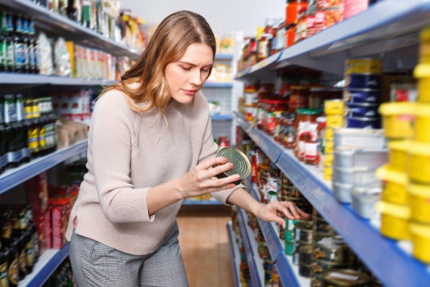
Storing canned food
One of the benefits of buying canned food is that it is easy to store – it stacks nicely in the cupboard and it has a much longer shelf life than fresh or even frozen produce.
So how should it be stored? There aren’t many rules for storing unopened canned food, but ideally it should be kept somewhere cool, dry and out of direct sunlight. Rotating cans so that the oldest is used first will also prevent food from going over its best before date.
Once the can is opened, you should transfer the leftover into another container first, before storing the food in the fridge for a couple of days. It is never a good idea to store an opened tin in the fridge, as the tin (and probably its coating) can dissolve quicker into the food than a sealed can, especially if the content is acidic like tomatoes.
Canned food should also be used before the best before date displayed on the tin. And if the tin is damaged, the seams are broken or the can leaks, the advice is to avoid eating the content.
Some experts also suggest washing or wiping the top of the container before opening, as doing so will help to prevent any bacteria from getting into the opened food.
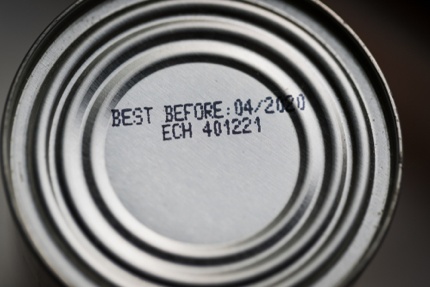
Cooking with canned food
Canned food is cheap and versatile, not to mention it also has a long shelf-life and can make our meals go further. These reasons drive many of us to load up our shopping baskets with tins of food, especially during the COVID-19 pandemic when countries were imposing lockdown restrictions.
While most people rely on these tinned heroes to make a quick and easy lunchtime treat or a light supper, it is also fun to whip up gourmet dishes out of cans from time to time. If you are keen to try, here are a few recipes which we absolutely love:
- Creamy (cheater) chowder
- Mexican style tuna tacos
- Spicy lentil burgers
- Fritos pie casserole
- Tomato and chickpea curry
- Spam musubi
- Creamy Spam risotto croquettes
- Pineapple-peach-pear skillet crisp
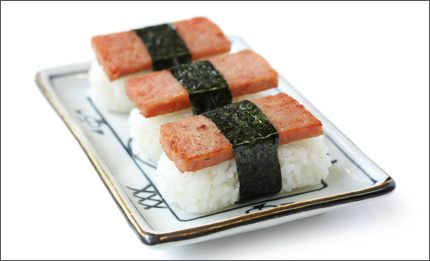
You may also like:


